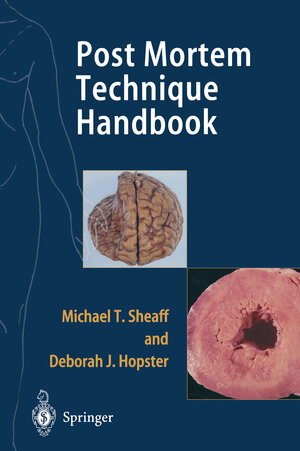
×
![Buchcover ISBN 9781447136774]()
From reviews of the 1st edition:
This is a practical benchtop manual, which is comprehensive and fills a gap in the market. It is recommended, especially as an introductory handbook for trainees in anatomical pathology. (Clinical, Anatomical, Experimental Pathology 2002:34;204.)
The textbook should be available n each institute of pathology which is still performing autopsies, especially when young colleagues are to be trained in this technique. (Electronic Journal of Pathology and Histopathology 19-03-01.)
Post Mortem Technique Handbook
von Michael T. Sheaff und Deborah J. Hopster, Vorwort von J.H. Sinard und Vorwort von C. Sir BerryThe relentless decline in the hospital based autopsy has been documented else where in detail and has been generally deplored as a loss of an important method of „quality control“ at a time when the practise of Medicine is closely scrutinised. This is not the place to revisit these well-rehearsed arguments but the change itself provides a powerful justification for the production of this book. The decrease in clinically requested autopsies in hospitals leaves a large and increasing number of Coronial autopsies to be done; many of these in circum stances of discontent with some aspect of the medical or other management of the events which ultimately lead to death. The pathologists now performing these autopsies will not have had the amount of experience that was commonplace among their predecessors; an experience of carrying out procedures which, although devised for different purposes, can provide a more complete examina tion of the whole body than often appears necessary in straightforward deaths in the community. In my first two years in Pathology I performed 200 autopsies; most of my contemporaries will have had a similar grounding - it would not be possi ble to provide this experience for staff in training now, except in some parts of the European mainland. So there is a need to provide a written but practical account of the autopsy which will help those who may find themselves in unfamiliar territory.


